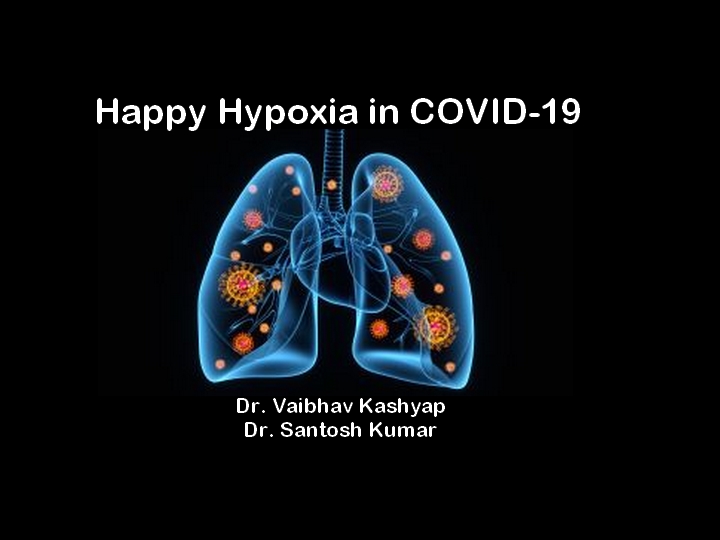


The coronavirus disease is no longer just a pandemic. It is a mystery that has baffled doctors and collapsed the most robust health infrastructures in the world. The novel virus is regularly presenting with an array of peculiarities, but one of them appears to be flouting at one of the most basic and established scientific principles. Happy hypoxia or silent hypoxia is the condition when COVID-19 patients present with oxygen saturation, which is significantly low and life-endangering (as little as 50%), but without any difficulty in breathing or dyspnea.
Hypoxia, in general, is defined as the lack of adequate oxygen in blood, tissues, or cells. Usually, the oxygen saturation is >95%, but in respiratory disorders like chronic emphysema or pneumonia, where the lungs are not competent enough to breathe appropriately, blood saturation of oxygen falls dramatically, which later manifests as dyspnea. The oxygen in the blood is plotted against the partial pressure of oxygen in the air, in the oxy-hemoglobin dissociation curve. In a normal individual, the curve is sigmoidal and the value of partial pressure at which oxygen saturation is 50% is known as P50. In COVID-19 patients, as the lungs are inflamed and there is a mismatch in the ventilation to perfusion ratio, the blood does not get enough oxygen. This leads to a right shift in the curve, which signifies that a higher partial pressure is now required to achieve 50% saturation, resulting in a higher effort to breathe leading to dyspnea. Our brains, in the medulla oblongata, have specialized centers devoted to respiratory regulation. These centers are highly susceptible to the concentration of CO2, and even a subtle rise in its levels can stimulate it and lead to shortness of breath or dyspnea. Oxygen has virtually no role in respiratory regulation until the levels are deficient, and this might be an explaining factor of silent hypoxia.
The absence of a significant symptom in these patients has raised its concerns. The body has to deal with a virus as well as a shortage of oxygen. The problem is that when these patients start developing shortness in their breath, their condition has worsened so much that breathing without a ventilator is impossible, and death is almost inevitable. It is so ironic that the absence of the symptom made the patients comfortable, so much that they could use their mobile phones without any issue, and the same absence can lead to the exacerbation of the disease to the point of death.
Various studies have been conducted to explain this silent hypoxia. A study by Martin J Tober et al suggests that this might be linked to the corona virus creating a peculiar action on how the body senses low levels of oxygen, which could be associated to the lack of smell.
The phenomenon of happy hypoxia highlighted the role of an instrument like pulse oximeter in detecting the disease. The levels lower than 90% can be alarming as the more severe symptoms might appear later during the course of the disease. Especially, when a person has fever and cough and is doubtful of having contracted the virus, a simple pulse oximeter can help before the actual diagnosis. The instrument can be employed by a person himself can lead to early detection, preventing the advancement of the infection. It is to be noted that pulse oximeter is not a definitive test for COVID-19. Various co-morbidities can lead to decreased oxygen saturation. Conditions like asthma, COPD or coronary artery disease can present with low values of oxygen saturation. The test only gives a hint about respiration distress, not any disease. Henceforth, the presence of major symptoms should be the priority for further diagnosis of COVID-19.

| YOUNG DOCTORS MOVEMENT |STATE LEADERS | FMPC 2019 | FMPC 2020
| AFPI
© All rights reserved 2020. Spice Route India 2020
Contact us at TheSpiceRouteIndia@gmail.com